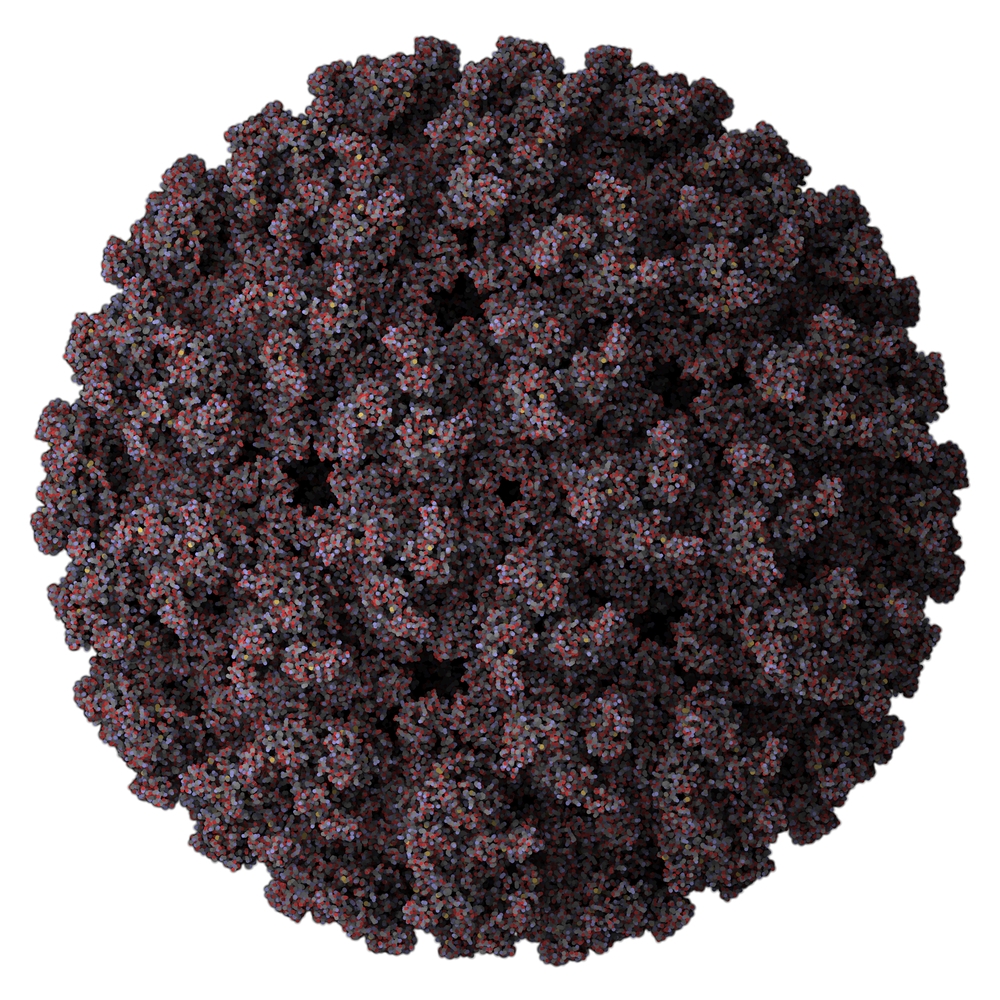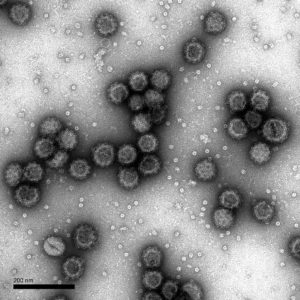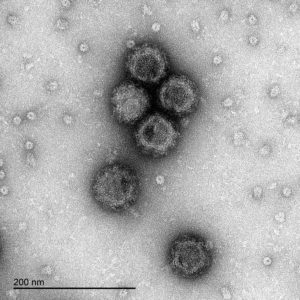EM Images: Negative staining electron microscopy of MAYV virus-like particles (VLPs).
Mayaro Virus VLP
Recombinant Mayaro Virus-Like Particles produced in mammalian HEK293 cells. Mayaro structural proteins are transiently expressed to form a particle comprising E1, E2 and capsid protein, without the non-structural proteins or genome. Resultant particles are totally non-infectious.
Contact us at NAC.Contact@LGCGroup.com for enquiries on this product.
MAYARO VIRUS VLP
At The Native Antigen Company we have prepared recombinant Mayaro Virus VLP utilising our proprietary mammalian cell expression system. These particles contain Capsid and E1 and E2 envelope proteins. They will find application for researchers and assay developers who are looking to develop assays to distinguish Mayaro virus infection from Chikugunya virus.
Contact us at Contact NAC.Contact@LGCGroup.com for enquiries on this product.
PRODUCT DETAILS – Mayaro Virus VLP
- Recombinant Mayaro virus-like particle (strain Acre27) comprising E1, E2 and Capsid proteins (NCBI Accession Numbers: AJA37502.1, KM400591.1), expressed from HEK293 cells.
- Presented as liquid in DPBS, pH7.4.
- Suitable for use in immunoassay development.
BACKGROUND
Mayaro virus (MAYV) is a positive-sense single stranded RNA virus that belongs to the genus Alphavirus, a member of the Togaviridae family of viruses. It is a member of the Semliki Forest antigenic sero-complex, a serological group within the Alphavirus genus, and is closely related to Chikungunya virus (CHIKV) (Esposito, D.L.A).
Infection with Mayaro virus causes an acute, self-limited dengue-like illness of 3–5 days duration, characterized by fever, headache, myalgia, rash, prominent pain in the large joints, and association with rheumatic disease. MAYV is recognised as an emerging virus with the potential to cause a major epidemic in Central and South American countries. Currently, there is no licensed prophylactic vaccine or specific treatment for MAYV fever. Prevention of MAYV is through vector control measures to reduce transmission of the virus. Given the geographical distribution of MAYV and the similarity of the symptoms of Mayaro fever to infections caused by other arboviruses such Dengue fever, Chikungunya and Zika virus, it is considered important to be able to differentiate diagnostically between these arboviral diseases (CDC). Diagnosis of MAYV infection may be achieved by serological testing for MAYV specific IgM antibodies using enzyme immunoassays (EIA). However, cross reactivity with related viruses can reduce assay sensitivity and prevent accurate diagnosis (Figueiredo, ML).
REFERENCES
- Esposito DLA and Fonseca BALD (2017). Will Mayaro virus be responsible for the next outbreak of an arthropod-borne virus in Brazil? Braz J Infect Dis.21(5):540-544
- Center for Disease Control and Prevention: Emerging infectious diseases. Brunini, S et al (2017). High Frequency of Mayaro Virus IgM among Febrile Patients, Central Brazil. Research Letter. Volume 23, Number 6—June



